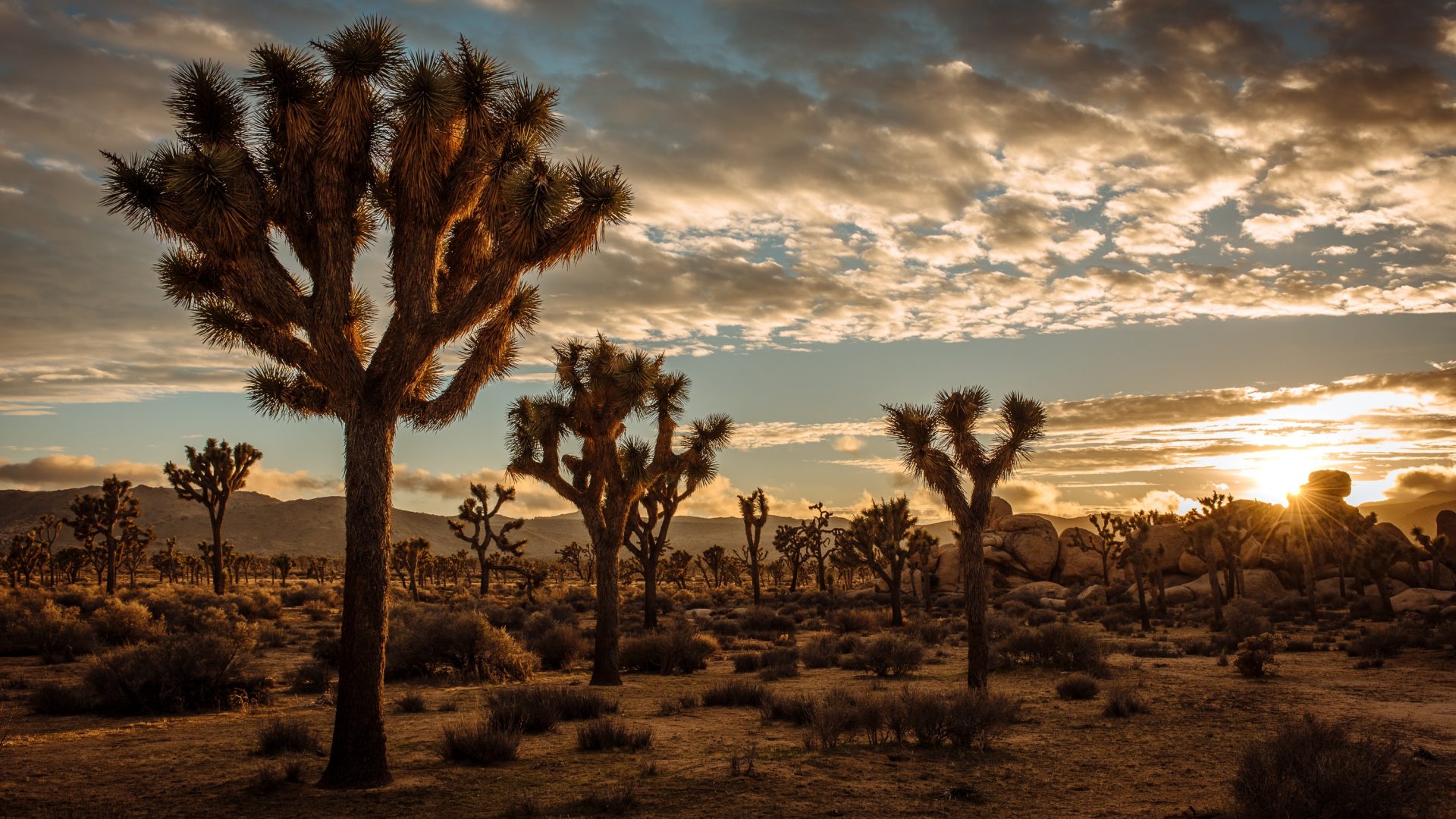
Rising temperatures, fires, and human interference could wipe out Joshua trees by 2100. That’s why the state of California is considering a petition to protect Joshua trees under the state Endangered Species Act.


Rising temperatures, fires, and human interference could wipe out Joshua trees by 2100. That’s why the state of California is considering a petition to protect Joshua trees under the state Endangered Species Act.
You know them by name and by look. In fact, Joshua trees—a type of yucca and member of the agave family (how sweet)—are iconic enough to have an entire national park in California named in their honor. But now, they may be in danger of extinction.
Currently, California state officials are analyzing data that will inform the decision to add Joshua trees to the threatened species list and protect it under the state Endangered Species Act due to increasing environmental threats and unfavorable growing conditions brought on by human-caused climate change.
The issue was publicly identified last month when the California state fish and game commission postponed the decision to list or not-to-list after a tied vote. The decision will now be voted on officially in October. If listed, Joshua trees will be the first species in the state to be protected due to the threats of climate change.
RELATED: It’s time to let Indigenous people care for their land, their way
The spikey, Seussian species has lived in the arid landscapes of the Mojave Desert and the Southwestern United States for thousands of years (in fact, some of their early neighbors were likely giant ground sloths that roamed North America over 11,000 years ago). In those days, large herbivores and disasters (aka mass extinctions) were certainly an issue. But today, the threats Joshua trees face all stem from nature of the human varietThethe three main interconnected threats the species faces now are being cut down to make room for development, wildfires and rising average temperatures due to fossil fuel-driven global climate change.
Listing the species as threatened in the state would first and most directly offer protection from development by adding conservation-minded considerations to the permitting process for new buildings in the desert. Those safeguards could make a big difference for the 40 percent of Joshua tree habitat that falls outside of protected public land.
Unfortunately, listing Joshua trees doesn’t immediately create defenses against wildfires and climate change. And curbing fossil fuels? That’s an institutional change that nearly every species currently on the planet could benefit from. Research shows that in business-as-usual warming scenarios with unchecked global temperature rise, Joshua trees will be all but eradicated by 2100.
But (here’s the good news), with every fraction of a degree of warming avoided, the percentage of current Joshua tree habitat that will remain habitable increases. As long as Joshua tree populations aren’t too severely reduced by short-term human actions (ahem, like being cleared from new construction sites) there are measures people can take—and are already taking—to shepherd Joshuas through increasingly harsh conditions. Those steps show up as replanting after fires, protecting seedlings during their most vulnerable early years, clearing invasive, fire-spreading grasses from around Joshuas, and even shading the plants on the most dangerously hot days.
RELATED: What can we learn from the world’s oldest trees?
“If you reduce all other threats, extinction risk drops significantly and makes adaptation possible,” says Brendan Cummings, the Center for Biological Diversity’s Conservation Director. To Cummings, who filed the petition to list Joshua trees as officially threatened, listing them isn’t just about the tangible protections.
“It’s important for regulatory reasons, but it’s also an incredibly important symbolic act. It would be the state of California recognizing that climate change is a fundamental threat to biodiversity, and saying that we are committed to saving this iconic species,” Cummings says.
As it turns out, none of the members of the California fish and wildlife commission deciding the case disputed that Joshua trees were threatened due to climate change. Instead, the question at hand was whether the Endangered Species Act was the best manner by which to protect them.
The deadlocked fish and game commission will vote again in October. Between now and then, the governor could appoint a fifth commissioner to fill the empty seat and serve as the tie-breaking vote. Public comment has also been narrowly reopened for the case, and new information may come to light and sway the committee one way or the other.
Before the October vote, thousands of people will visit Joshua Tree National Park and walk among the strange mystifying plants that exist nowhere else in the world. And in a twist of irony, more Joshuas will likely be lost to fire, killed by heat, or cut down before a decision to keep as many of them alive as possible is made.

Miyo McGinn is Adventure.com's US National Parks Correspondent and a freelance writer, fact-checker, and editor with bylines in Outside, Grist, and High Country News. When she's not on the road in her campervan, you can find her skiing, hiking, and swimming in the mountains and ocean near her home in Seattle, Washington.








Can't find what you're looking for? Try using these tags: